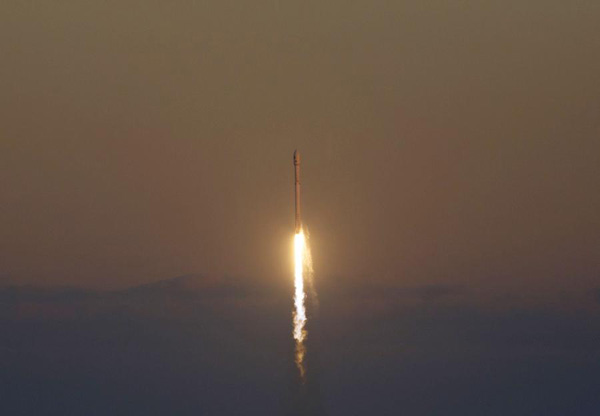SpaceX launches satellite to deep space for 1st time
(Xinhua) Updated: 2015-02-12 09:33
The primary mission of the rocket is to send the DSCOVR, a $340-million partnership between the NOAA, the US space agency NASA and the US Air Force, to a place about a million miles (1.6 million kilometers) away from Earth where the gravity of Earth and the sun is balanced.
From that location, also known as Lagrangian point 1, the spacecraft will succeed NASA's 17-year-old Advanced Composition Explorer (ACE) to observe the solar wind that can affect power grids, communications systems and satellites close to Earth.
The US agencies said this satellite location is the only place to provide 15-to-60 minute warning time before a potentially dangerous solar storm could hit Earth.
The DSCOVR, formerly known as Triana, was originally conceived in the late 1990s as a NASA Earth science mission that would primarily provide a near continuous view of Earth and measure how much sunlight is reflected and emitted from the whole Earth.
The Triana program was suspended and the satellite went into storage in 2001. Seven years later, the US government re-examined the satellite and determined that it was the optimal solution for meeting NOAA space weather requirements.
NASA then renamed the satellite DSCOVR and repurposed it as a solar observatory to replace the aging ACE spacecraft, which will go into a backup status for the NOAA after the replacement.
- SpaceX Dragon capsule returns from space station
- Boeing, SpaceX win contracts to build 'space taxis' for NASA
- Elon Musk unveils SpaceX Dragon V2 spacecraft
- SpaceX cleared for cargo run to space station
- SpaceX's Dragon capsule splashes into Pacific
- SpaceX commercial cargo capsule blasts off
- NASA hires SpaceX for science satellite launch
- SpaceX is doing business in space
- SpaceX rocket lifts off for space station trial run







